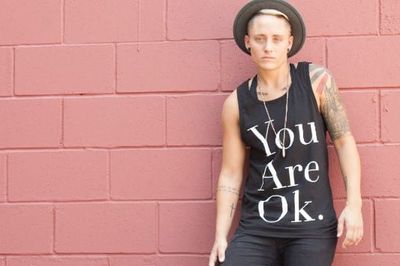Gay. Gay and Lesbian. Gay, Lesbian, and Bisexual. Gay, Lesbian, Bisexual, and Transgender (GLBT). Lesbian, Gay, Bisexual, and Transgender (LGBT). The conventions about how our community has referred to itself have changed over the years, gradually expanding to include other minorities of gender and sexuality. Rarely have these shifts been uncontroversial, as they are driven by political and social commitments that may not be universally held even within the community.
Adding the ‘B’ to the spectrum may seem like it ought to be unproblematic… But how many of us has not heard, or even said, something in our safe, private, LGbT spaces to the tune of, “He’s gay but in denial.”
I remember when I told a close friend, early in my own coming out process, that while I did identify mostly as gay, I wasn’t entirely comfortable with the term. I felt like, since the attraction ratio was more like 80%/20% favoring men, I was gay but strictly speaking maybe I ought to refer to myself as bisexual? I was being earnest and opening up a secret space, and the response I received? “You’ve been in the closet too long—you’re just experiencing ‘bi now, gay later.’”
But I wasn’t. And now I felt like I had a new closet to inhabit, as I no longer felt comfortable expressing the nuances of my own identity. And that nuance—despite the commonness of bi denial within the gay community— is one that is much more widely accepted than many of the newer identity terms.
Transgender is problematic as part of the spectrum as originally prescribed, but has opened the community to both sexual and gender minorities in fruitful ways: we now hear not only of transgender but gender non-conforming, bigender, agender, two-spirit, etc.
Adding the Q—some understand questioning but most believe queer—was cause for anger and alarm among some under the rainbow, and that grew loud and pointed when the suggestion arose that the whole community might be served by adopting not an “alphabet soup” as its identifier but simply fly the queer colors.
To part of a generation queer is an irredeemable slur, while to a younger generation it is a reclaimed term that rejects both the heteronormative structure of heterosexual versus homosexual, which allows only two options, as well as the community’s seeming desire to reduce sexuality to a few well-defined possibilities, all over and against heterosexuality.
Both of those approaches privilege heterosexuality as the thing we all define ourselves in comparison to, and neither do justice to the complexities of sexual orientation and gender, neither of which it seems is as rigid as they were once held to be.
While I do understand the resistance to the use of the term queer—I myself don’t think it serves well as a blanket term, but do think it does well describe many people’s identity in its reformed use—I’d like to point out to the negative experience of the word queer is not universal. For example, the terms that was used to try to break my spirit when I was in school all centered on the term “gay.” We have a way of trying to dictate according to our own experience, and we should beware that urge.
Speaking of slurs, the term “alphabet soup” has often been used derisively as an attack on the socially progressive momentum of the community, by both internal and external critics. Social conservatives ridicule us for our many colored banner and our many-faceted membership, but those same people within our tribe who engage in bi-denial, gay misogyny and transphobia, and demand that people conform to a narrow range of human sexualities/genders behave no differently. Every addition to the “alphabet soup” rankles them.
I sort of enjoy the term alphabet soup, for all of its metaphoric opportunities: all the possible combinations of letters are in it, waiting to rise to the surface and be arranged by our joyous inner child into a chain that fit’s just right. But only an unfettered inner child, who hasn’t been told there is only one order, can truly find the right word for us, and more importantly for him/her/themselves.
See also: Get to know some of your "QIA+" neighbors
